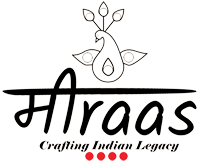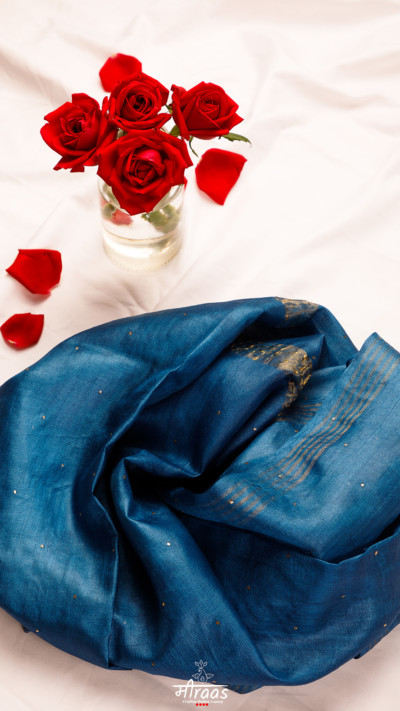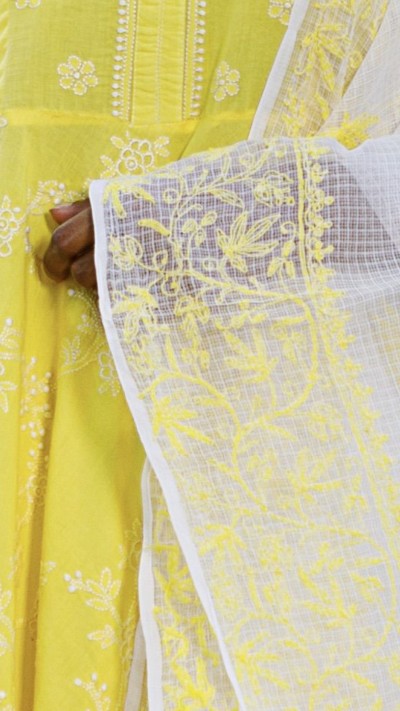
Please, enable Wishlist.
- Home
- Shop
- Dhanlakshami Chikankari Saree
- Advait Mens’ Chikankari
- Power Of Silence (Chikankari Kurta Edit)
- Ready To Ship
- Aari Zardozi
- Luxury Chikankari Dupattas
- The Wedding Collective
- Chikankari Statement Blouses
- Umrao Mukaish Collection
- Dopehri Chikankari Casuals
- Rajnigandha
- Rang Deenhi Shibori Collection
- Curated By Meiraas
- Saree
- Kurta
- Dupatta
- Blouse
- Top
- Stole
- Pants
- Handloom Chanderi
- Handloom Maheshwari
- Handloom Linen
- Handloom Cotton
- Handloom Organza
- Handloom Silk
- Cotton Silk
- Blog
- About
- Sustainability
Filter by categories
- Uncategorized
- Aari Zardozi
- Advait
- Chikankari Dupattas
- Chikankari Kurta Edit
- Chikankari Ready to Wear
- Curated By Meiraas
- Dhanlakshami Chikankari Sarees
- Dopehri
- Featured
- Gift Card
- Hand Spun Kosa Cotton & Chikan
- Rajnigandha Collective
- Rang Deenhi
- Ready to Ship
- Regalia - A Muakish Collective
- Statement Blouses
- The Wedding Collective
- Umrao
Filter by price
FILTER BY FABRIC
FILTER BY CRAFTS
Mughal Phool Boota Dupatta
₹3,500.00
White Dupatta with White Chikankari with unique Meiraas Patta Boota(Floral) motif, inspired by Nawab era & Rajasthani Flower Art. A perfect dupatta for Light Occasion or Office Wear.
This motif is also the identification of Mughal Art seen in many historical palaces of India.
All Meiraas motifs of Chikankari are extremely high quality & rare to be found.
Details: The fabric used here is Cotton Silk.
Additional Information:
Washing Instructions: Cold Water & Mild Detergent or Baby Shampoo wash at home with gentle hands. You can Dry Clean also
Read more
Blush Pearl
₹24,500.00
An ethereal Blush or soft Pink Pearl colour Chikankari saree on Kota Doria, with subtle sequins & pearl detailing . This saree is one piece only and Ready To Ship.
The Sustainability Quotient (TSQ):
1. Skilled Hand Embroidery on absolutely novel motif art.
2. Hand carved motifs carved following all processes.
4. Chikankari work done on intricate, antique motifs, that might someday be housed in a museum of crafts, or a well researched coffee table book.
5. Sequins & Pearl detailing on the saree
KHAYAL (Mood-board):
Blush Pearl or Pink Pearl is the inspiration behind this saree. A strand of pearls with Chikankari Kota sarees is what defined the ladies of Lucknow and their summer afternoons & evenings. These strand of pearls were in usual ivories, but sometimes one could also find a beautiful strand of Blush Pink pearl strand and a saree to match! That understated elegant look was the inspiration behind this saree.
POSHAAK (About the garment):
Summer evenings cannot be as elegant, unless draped in this beautiful Blush Pearl Tepchi Chikankari saree. The saree features a very unique style of palla layout. It has a beautiful border on 3 sides, which features stunning taagha Jaali work along with Tepchi, a rarity now, and something we love doing.
The saree has a gorgeous & subtle blush nude shade, that is further enhanced with light sequins & pearl detailing to make this a summer afternoon or evening informal party wear as well.
Read more
Rooster Tussar Silk Chikankari Blouse Piece
₹5,200.00
If you want us to stitch your blouse with this fabric too, then after shopping for the fabric you can drop us an email at namaste@meiraas.com
"Meiraas has created and re created motifs of Archival quality that speak of the heritage of this craft and the history associated around it; wearing Sarees & Suits in Meiraas Chikankari is a luxury that our patrons love to save and invest into, to create their own heritage; however, the sarees and suits, though very special, are certainly relegated to occasion wearing. We also wanted our patrons to enjoy the Luxury of Meiraas Archive Quality Chikankari on an everyday or more frequent basis, that is why we decided to make these beautiful statement blouse fabrics, that can be worn with any saree and on any occasion - whether workplace meetings, brunches or cafe outings, or even weddings. We hope you enjoy these Everyday Luxury pieces from Meiraas" - Vidhi Rastogi, Head of Creative, Meiraas.
The Chikankari Blouse has one statement motif for the back, and small floral bootis in rest of the blouse. These Silk blouses are dyeable & the embroidery will catch some shade of the dye, making them look aesthetically very pleasing when dyed. The blouse fabric has the quirky, and Meiraas Exclusive, Rooster Motif. Please get it fully lined when getting it stitched.
Washing Instructions: Dry Clean Only
Read more
Gul – Chikankari Chanderi Blouse Fabric
₹4,500.00
Note from the Founder:
"Meiraas has created and re created motifs of Archival quality that speak of the heritage of this craft and the history associated around it; wearing Sarees & Suits in Meiraas Chikankari is a luxury that our patrons love to save and invest into, to create their own heritage. We also wanted our patrons to enjoy the Luxury of Meiraas Archive Quality Chikankari on an everyday or more frequent basis, or mix & match with more crafts, that is why we decided to make these beautiful statement blouse fabrics, that can be worn with any saree and on any occasion - whether workplace meetings, brunches or cafe outings, or even weddings. We hope you enjoy these Everyday Luxury pieces from Meiraas" - Vidhi Rastogi, Head of Creative, Meiraas.
Khayal (Moodboard):
Miniature or "keel ka boota" are absolutely small and detailed motifs in Chikankari, that though very popular once, and now used very sparingly in a very commercial market. These motifs were extremely popular amongst even the Britishers and Europeans who loved the appeal of a clean palette with nuanced small motifs, lazily adorning the fabric with delicate touch. Meiraas undertakes the work of finding such miniature antique motifs (now such new motifs are not made) and using them to create subtle pieces of wearable art.
Poshaak (About the fabric):
This Chikankari and Mukaish Top/Blouse fabric is an ethereal White on White beauty, with smattering of two miniature motifs of Flowers on front & back and one motif for sleeves. This will be a blouse that you will love to pair with any saree. We will recommend that you keep it white for multi usage. Please get the fabric fully lined to make a blouse.
Imp:
Read more
- Chanderi catches buttery luminous colours; if you wish us to dye this in a shade you prefer, please email us after you have purchased the product.
- If you want us to stitch your blouse with this fabric too, then after shopping for the fabric you can drop us an email at namaste@meiraas.com
Phool Patti – Chikankari Chanderi Blouse Fabric
₹4,500.00
Note from the Founder:
"Meiraas has created and re created motifs of Archival quality that speak of the heritage of this craft and the history associated around it; wearing Sarees & Suits in Meiraas Chikankari is a luxury that our patrons love to save and invest into, to create their own heritage. We also wanted our patrons to enjoy the Luxury of Meiraas Archive Quality Chikankari on an everyday or more frequent basis, or mix & match with more crafts, that is why we decided to make these beautiful statement blouse fabrics, that can be worn with any saree and on any occasion - whether workplace meetings, brunches or cafe outings, or even weddings. We hope you enjoy these Everyday Luxury pieces from Meiraas" - Vidhi Rastogi, Head of Creative, Meiraas.
Khayal (Moodboard):
Miniature or "keel ka boota" are absolutely small and detailed motifs in Chikankari, that though very popular once, and now used very sparingly in a very commercial market. These motifs were extremely popular amongst even the Britishers and Europeans who loved the appeal of a clean palette with nuanced small motifs, lazily adorning the fabric with delicate touch. Meiraas undertakes the work of finding such miniature antique motifs (now such new motifs are not made) and using them to create subtle pieces of wearable art.
Poshaak (About the fabric):
This Chikankari and Mukaish Top/Blouse fabric is an ethereal White on White beauty, with smattering of two miniature motifs of Flower & Leaf on front & back and one motif for sleeves. This will be a blouse that you will love to pair with any saree. We will recommend that you keep it white for multi usage. Please get the fabric fully lined to make a blouse.
Imp:
Read more
- Chanderi catches buttery luminous colours; if you wish us to dye this in a shade you prefer, please email us after you have purchased the product.
- If you want us to stitch your blouse with this fabric too, then after shopping for the fabric you can drop us an email at namaste@meiraas.com
WAHEEDA | Amethyst Coloured Pure Georgette Mukaish Embroidery Saree
₹21,500.00
Reminiscent of the Bollywood divas of 1950s, the sarees in this collection aim at re living that timeless & elegant era, that is so close to the timelessness of Mukaish Embroidery. This Amethyst coloured Saree is adorned with delicate embroidery of Dancing Cranes (original Meiraas motif) on palla in a triangle flight pattern, while rest of the saree is covered with stars of Mukaish. A Gold tissue facing gives the much needed finish to this beautiful saree.
Read more
NARGIS | Royal Blue Pure Georgette Mukaish Embroidery Saree
₹21,500.00
Reminiscent of the Bollywood divas of 1950s, the sarees in this collection aim at re living that timeless & elegant era, that is so close to the timelessness of Mukaish Embroidery. This Royal Blue Saree is adorned with delicate embroidery of Dancing Cranes (original Meiraas motif) on palla in a triangle flight pattern, while rest of the saree is covered with stars of Mukaish. A Gold tissue facing gives the much needed finish to this beautiful saree.
Read more
Basanti
₹2,600.00
The Sustainability Quotient (TSQ):
Read more
- Mukaish Hand Embroidery with proper "ghutaai" - this means Mukaish embroidery has been rubbed using old technique of filling pebbles in a bottle and rubbing on the embroidery, instead of new age roller press method. This one method ensures long lasting Mukaish. In itself Mukaish is more sustainable craft that sequins or "salma sitaara" embroidery, as Mukaish never comes off, maintaing the look of the garment for much longer time.
- Handloom Chanderi Dupatta woven in Chanderi, MP.
- Azo Free, thrice filtered, dye
Gulaabi
₹2,600.00
The Sustainability Quotient (TSQ):
Read more
- Mukaish Hand Embroidery with proper "ghutaai" - this means Mukaish embroidery has been rubbed using old technique of filling pebbles in a bottle and rubbing on the embroidery, instead of new age roller press method. This one method ensures long lasting Mukaish. In itself Mukaish is more sustainable craft that sequins or "salma sitaara" embroidery, as Mukaish never comes off, maintaing the look of the garment for much longer time.
- Handloom Chanderi Dupatta woven in Chanderi, MP.
- Azo Free, thrice filtered, dye
Phalsai
₹2,600.00
The Sustainability Quotient (TSQ):
Read more
- Mukaish Hand Embroidery with proper "ghutaai" - this means Mukaish embroidery has been rubbed using old technique of filling pebbles in a bottle and rubbing on the embroidery, instead of new age roller press method. This one method ensures long lasting Mukaish. In itself Mukaish is more sustainable craft that sequins or "salma sitaara" embroidery, as Mukaish never comes off, maintaing the look of the garment for much longer time.
- Handloom Chanderi Dupatta woven in Chanderi, MP.
- Azo Free, thrice filtered, dye
Sindoori
₹2,200.00
The Sustainability Quotient (TSQ):
Read more
- Mukaish Hand Embroidery with proper "ghutaai" - this means Mukaish embroidery has been rubbed using old technique of filling pebbles in a bottle and rubbing on the embroidery, instead of new age roller press method. This one method ensures long lasting Mukaish. In itself Mukaish is more sustainable craft that sequins or "salma sitaara" embroidery, as Mukaish never comes off, maintaing the look of the garment for much longer time.
- Azo Free, thrice filtered, dye
Blue Sapphire
₹4,900.00
The Sustainability Quotient (TSQ):
Read more
- Mukaish Hand Embroidery with proper "ghutaai" - this means Mukaish embroidery has been rubbed using old technique of filling pebbles in a bottle and rubbing on the embroidery, instead of new age roller press method. This one method ensures long lasting Mukaish. In itself Mukaish is more sustainable craft that sequins or "salma sitaara" embroidery, as Mukaish never comes off, maintaing the look of the garment for much longer time.
- Handloom Tussar Silk woven in Bhagalpur.
- Azo Free, thrice filtered, dye
- Colours like Red, Green, Blue tend to look different in different lights, that is the nature of some colours.
- Colours may vary a bit, although they are all shot professionally in studio set up & closest colour has been photographed; Any variation can be due to digital medium of photography that is outside our control.
Filter by categories
- Uncategorized
- Aari Zardozi
- Advait
- Chikankari Dupattas
- Chikankari Kurta Edit
- Chikankari Ready to Wear
- Curated By Meiraas
- Dhanlakshami Chikankari Sarees
- Dopehri
- Featured
- Gift Card
- Hand Spun Kosa Cotton & Chikan
- Rajnigandha Collective
- Rang Deenhi
- Ready to Ship
- Regalia - A Muakish Collective
- Statement Blouses
- The Wedding Collective
- Umrao























